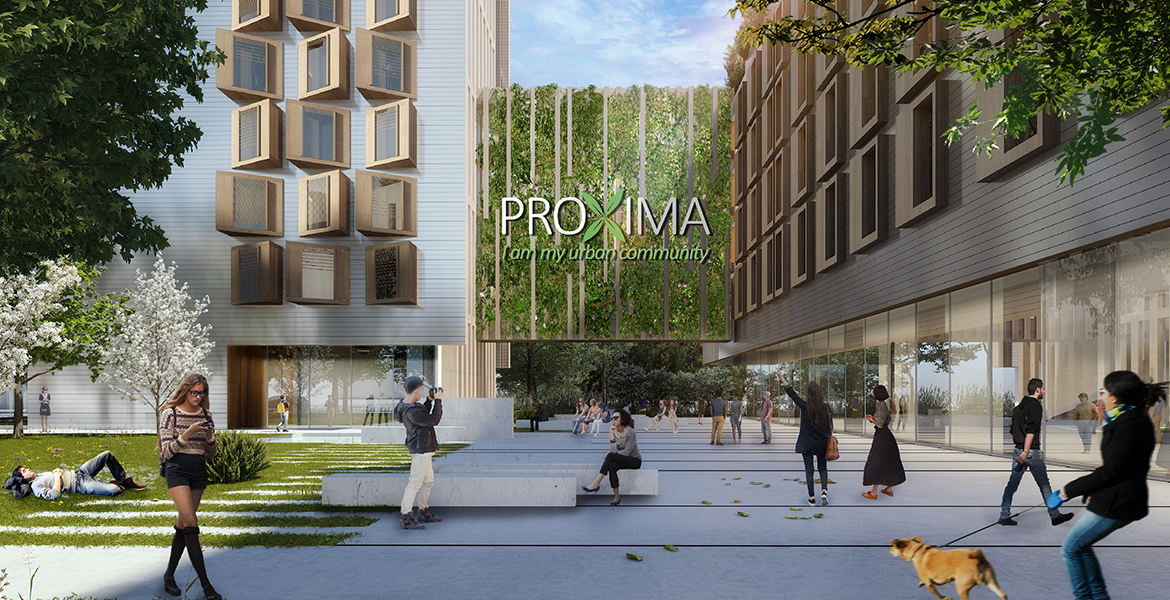
Proxima via Serio
- Post by: JDP Architects
- No Comment
📍 THE PROJECT CONTAINS THE FOLLOWING ASPECTS OF THE PROXIMA CITY PLATFORM: - flat monthly fee for the integrated living service - neighborhood housing campus - temporary residential services - POD, cluster, hotspot
Proxima is much more than a new residential building or a sustainable and architecturally attractive real estate development: it is a resilient, open, and inclusive urban community project that intends to base its social, environmental, and energy sustainability goals on the strategic synergy between human behavior and technology through an integrated digital platform. The behavioral-technological synergy at the core of Proxima’s design and management methods will be applied to the entire life cycle: from design to verification and monitoring, to disposal.
The credibility and actual feasibility of this approach is guaranteed by the long research phase that has supported its development, and by the market players and innovation leaders in the management of housing services and digital technologies involved.
Home as a service: a meeting place for connected urban communities
Proxima does not conceive of home as a place, but rather as a service: a meeting place for connected urban communities. Starting from Via Serio in Milan, Proxima has the goal of becoming a replicable model of urban residential service units for contemporary cities that addresses that growing part of the population that is mainly concentrated outside of main urban contexts and represented by a class of new residents, students, and professionals between the ages of 18 and 35/40.
The evolution of cities that have become hubs between their territories of reference and the globalized economic and financial system of relations has generated the emergence of a new social and professional group in which fluidity and temporariness represent the permanent condition that lies at the base of all aspects of social life, generating new behaviors and residential requirements.
Di Pasquale et al – 2014
Starting from the urgency to redesign cities according to these new dynamics, Proxima proposes a new urban typology that allows people to relate physically to the urban space. Among these new citizens, there are also students, whose number continues to grow in Milan compared with an inadequate number of residential services.
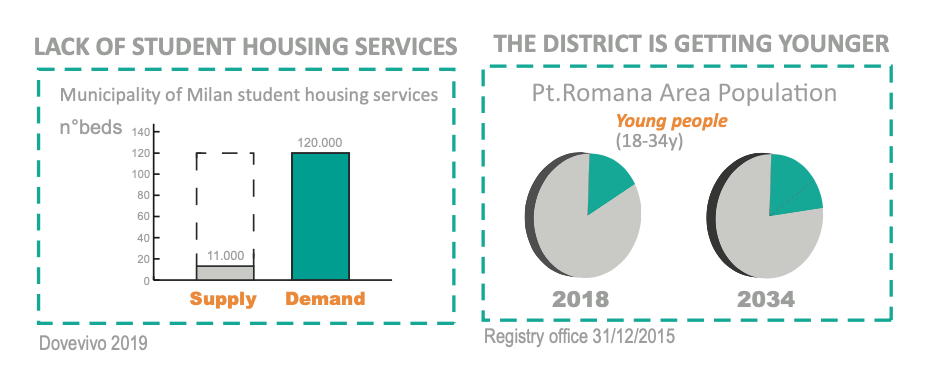
Thus, the project is designed as a combination of contracted integrated housing services (student residence) and functions of a private nature (integrated housing services), administered by a single integrated housing services manager (DOVE VIVO), declining the same model of housing. Proxima’s commitment to the “home as a service” paradigm lives also on in its business model: no longer focused on the sale of products, but rather on the provision of integrated housing services throughout the entire life cycle.
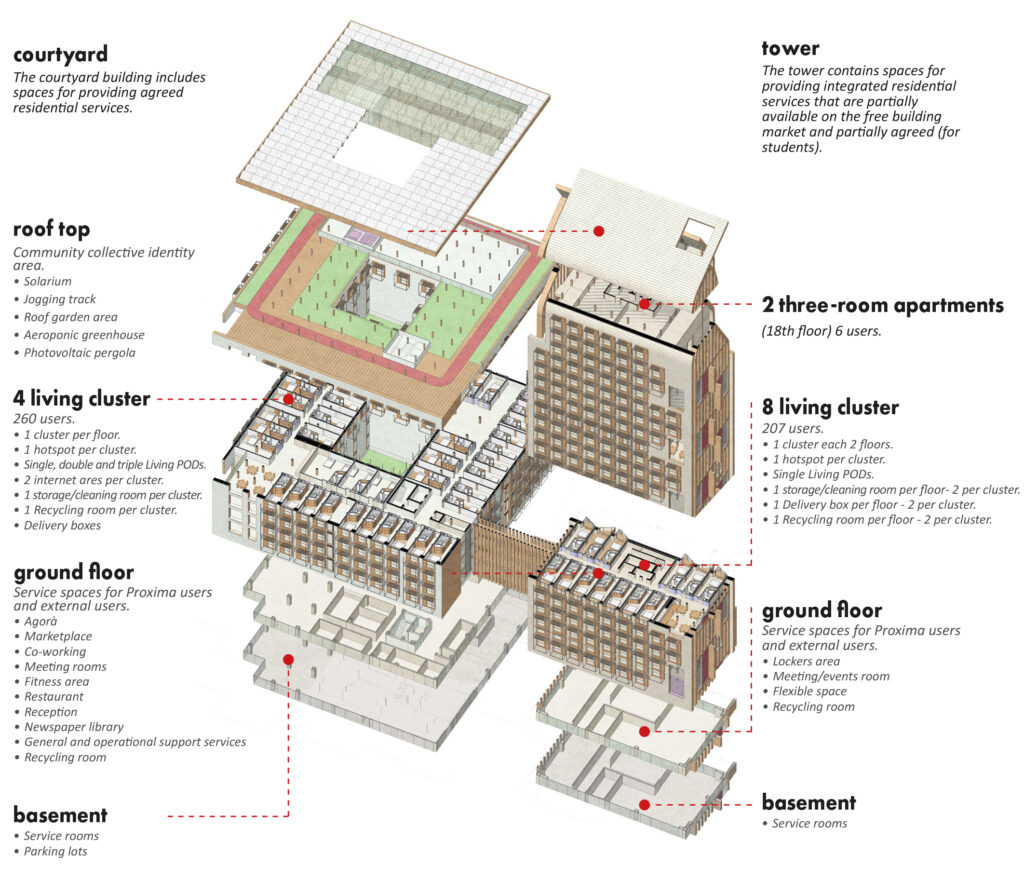
Proxima app: between sustainability and social resilience
The matrix of new sustainable behaviors will be the management App Proxima, which will play a key role in making all the building/ user, manager/building, and user/manager behavioral relational dynamics updated and measurable. Thanks to a “promote by reward” approach, users will be able to actually benefit from the advantages generated by their own virtuous housing behaviors by gaining “bonuses” to spend within the Proxima services ecosystem. This possibility creates a link between the purpose of management and maintenance costs reduction and the chance for the manager to provide additional housing services besides the basic ones.
This way, the App will enable both the activation of users’ behavior and involvement in achieving sustainability, while simultaneously contributing to the achievement of a social resilience goal.
Social resilience: the ability to develop and foster sociability and a sense of belonging to one’s urban community. “I am my urban community” is in fact the project’s slogan.
Architecture as a modular hybrid system for proximity relations
Proxima’s hybrid-modular approach allows interpreting contemporary micro-social structures, following the expansion of the family perimeter after the 1960s, which has since profoundly altered the modalities and dynamics of interpersonal dynamics (Laslett 1985). The typological, technological, and digital structure of Proxima is based, in fact, on concentric levels of relationship and proximity that move in a single scenario from the individual to the neighborhood community.
Not only the modular hybrid building seeks to redefine and expand the domestic perimeter (houseful), but also to understand it as a living cluster of individual living microcosms (living POD), gravitating around a common space (hotspot) for sharing the domestic experience of living.
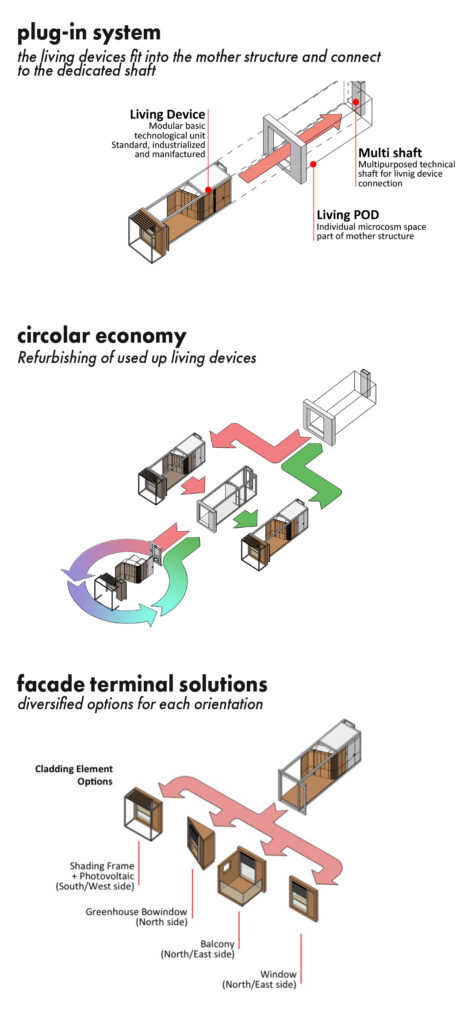
The structure of the hybrid modular building defines the separation between the mother structure and the replaceable living devices, based on the length of their life cycle. From a technological viewpoint, this separation makes it possible to concentrate, in terms of design, all the equipment with a high speed of obsolescence (20 years) into the living devices, and those with a longer life cycle (100 years) into the mother structure, gaining incredible environmental benefits.
The city floor, on the other hand, envisages the concentration of services for residents open to outdoor spaces and to the district. In order to create synergies and urban vitality, Proxima will also promote an interchange between public transportation and shared mobility: scooters, bikes, car-sharing, with charging stations also open to people in the surrounding neighborhood.
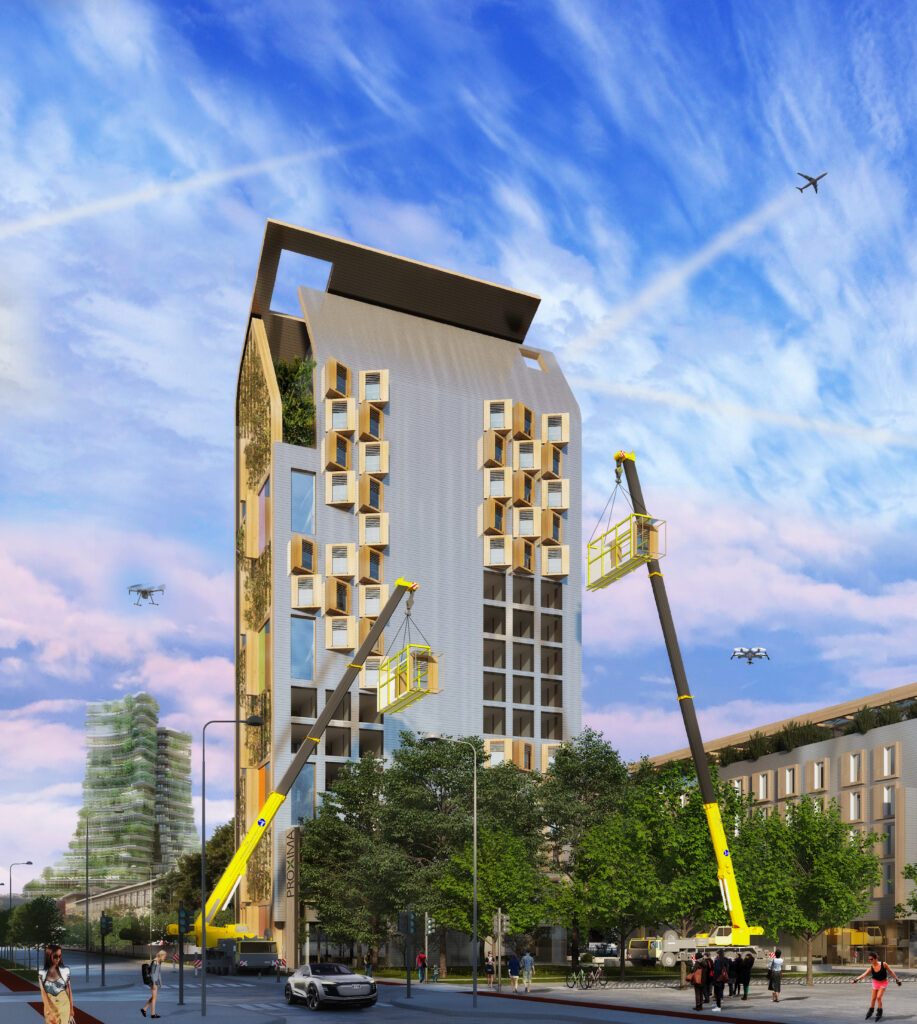
Resilience as a strategy for urban prosperity
Proxima’s different challenges will include re-examining resilience in an active perspective, extending the conditions of greater resource availability throughout the life cycle, by developing a platform of devices that are robust to the alterations of climate-environmental systems.
The goal of self-sustaining, particularly that of energy, and the convenient use of resources, is therefore the basis on which to set up this strategy of resilience that operates on multiple levels: energy self-sustaining, economic and social self-sustaining. The reduction of dependence on the public grid, self-produced energy, management of the water cycle, but also the physical/virtual structures of relational exchange between users and the operator with respect to the virtuous use of resources, are some of the modalities with which Proxima intends to transform the strategies of resilience into active principles that generate true urban prosperity.
